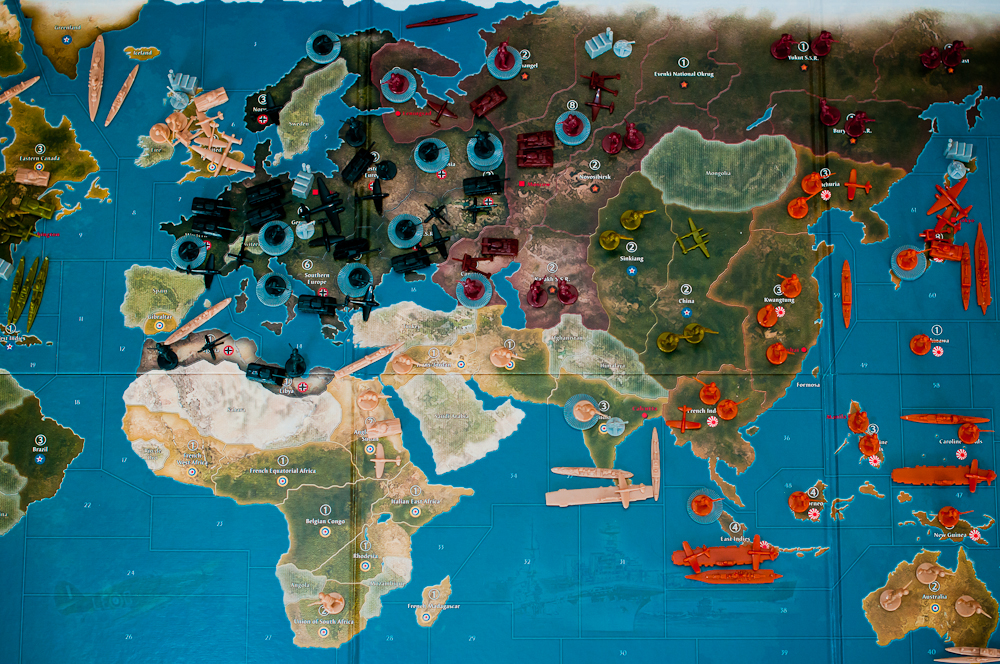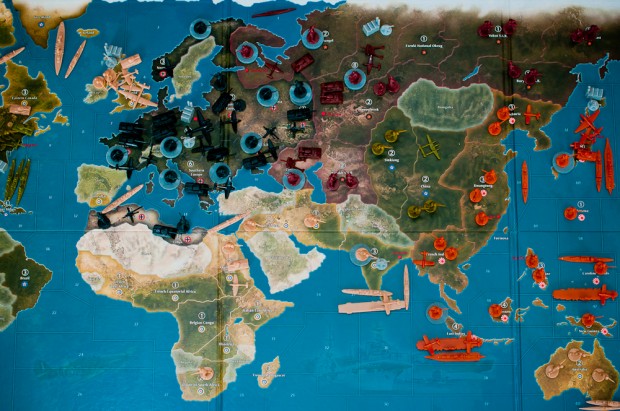In previous articles, Bunnies wrote about how to get the most out of your IPC, some of the dangers in thinking only of the immediate IPC payout of an action, and some of the common mistakes players make when thinking about probable outcomes. Bunnies then defined tactics as it applies to Axis and Allies Spring 1942, and in this final article of this series, Bunnies goes on to define strategy as it applies to Axis and Allies Spring 1942.
STRATEGY
Strategic level thinking is about preparing for situations that do not yet exist, often using resources one does not yet have. This is very different to tactical level thinking that merely makes the best short term use of existing resources.
PREPARING FOR SITUATIONS THAT DO NOT YET EXIST
When the Germans hold Karelia with enough units to deter any Allied attack, among other benefits to Germany, Russia is denied the income from Karelia, and Germany is able to trade Norway and Archangel. One way for Germany to attempt this early is to purchase and place tanks in Berlin, from where they can strike Karelia on Germany’s next turn.
When the Germans have a large air force, UK and US may be deterred from bringing any naval units into range. If UK and US stay out of range, they will not be able to use transports to move ground units to help in Europe.
In both cases, Germany has to prepare for situations that do not yet exist. By the time Germany can hit Karelia in force with new German tanks, Russia will have had a turn. So Germany has to prepare not only for what Russia can currently hit Karelia with, but for what Russia can hit Karelia with after a turn of Russian movement and Russian unit production. In the case of the UK/US fleet, most of the UK and US fleet do not yet even exist when Germany first starts to produce air units.
Near the end of the game, if one side has built a clear advantage over another, that advantage is usually a result of a combination of luck and/or strategic planning. Finishing the game at that point is a simple tactical exercise.
THINKING ABOUT THE SITUATION AT HAND
Although strategy is about preparing for situations that do not yet exist, future possibilities develop from the current situation, so the current situation must be considered. Current and future income levels and industrial complex capacity and location are also a part of strategic level thinking.
It’s often best for UK to transport as many ground units from London to Europe as possible per turn. If UK has an Atlantic fleet with three transports and a steady income of 32 each turn, UK can afford to produce eight ground units a turn, so should purchase a fourth transport to handle the extra units. On the other hand, if UK has an income of only 20, it can only afford six ground units a turn anyways, so it won’t find a fourth transport nearly as useful.
WHAT IF THE RULES OR MAP WERE DIFFERENT?
For the Spring 1942 edition of Axis and Allies, cost efficiency is key, so infantry and destroyers for fodder, and tanks, carriers, and fighters for offensive and defensive strengths are usually the best purchases. However, if the powers had higher income but lower industrial complex production capacity, or if the map were different, it would be better to purchase more industrial complexes or more expensive units such as cruisers. (With more resources and less unit production capacity, as in Axis and Allies Anniversary with National Objectives, cost efficiency is often less important than the quick application of force.)
LUCK, YOUR OPPONENT, AND YOU
A player must adapt to the constantly changing game position, so must adjust existing strategies or come up with new strategies to compensate for luck and an opponent’s moves.
CONCLUSION
Hopefully this methodical approach to units, tactics, strategy, and protability in this series of articles will aid you in organizing and expressing your ideas if you have comments or questions about tactics or strategies for Axis and Allies.
In parting, I’ll say – pat a bunny. It’s therapeutic unless you have allergies.


